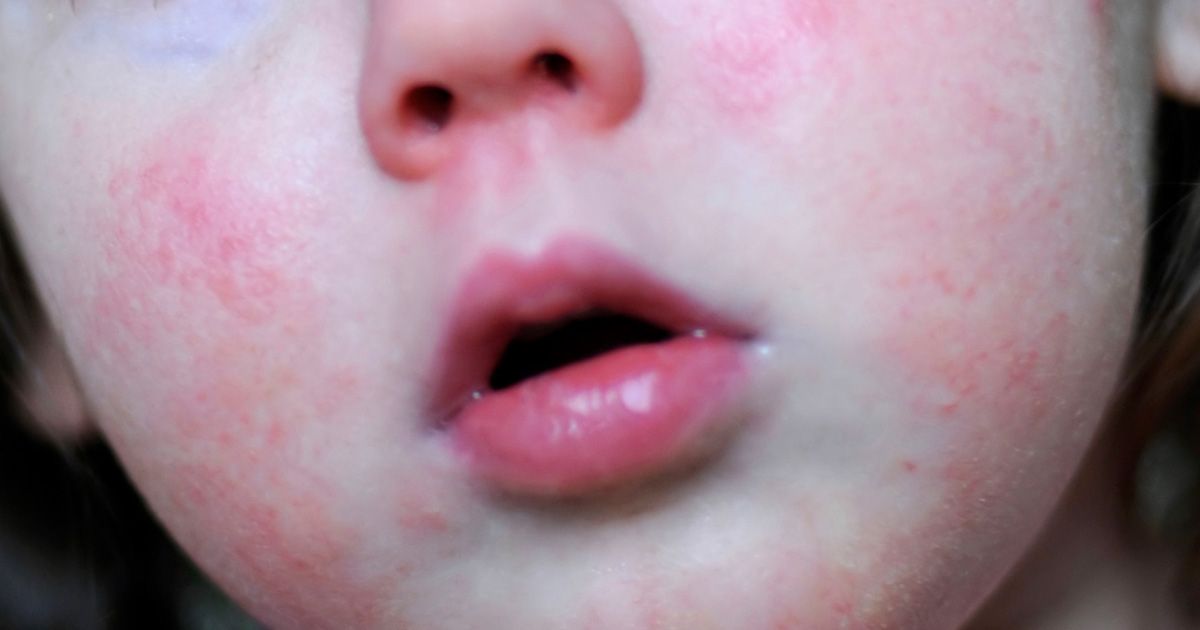Scarlet Fever Rash

The characteristic strawberry bumps are caused by bacteria, which can spread throughout your body. So don’t ignore scarlet fever rash. Learn more here.
What causes scarlet fever? Bacteria called group A Streptococcus, or group A strep, live in your nose and throat, where they don’t necessarily make you seem sick. But sometimes they overgrow and you get symptoms of a strep throat infection. Less than 10 percent of all strep throat infections progress to a scarlet fever rash.
You can pick up group A strep by drinking from the same glass or eating from the same plate as a sick person or by touching the rash. It tends to strike children from ages five to 15.
You’re most likely to get it as an adult if you live with a child, go to places like schools and daycare with many children, or live with someone with scarlet fever.
YOU MIGHT ALSO LIKE: What Is Scarlet Fever?
Sometimes the skin rash appears during or after a strep throat infection, but not always. It usually takes two to five days for an exposed person to show symptoms, usually a fever and sore throat. You may feel chills, and vomit or feel abdominal pain. Your tongue may swell up and develop a whitish coating or a strawberry-like red and bumpy surface. Your throat and tonsils may be very red and sore, and swallowing may be painful.
The tell-tale rash usually appears one or two days after the first fever, but it can show up earlier or up to seven days later. The bacteria create a poison that irritates your skin. Beginning as small, flat blotches on your neck, underarm, or groin, the scarlet fever rash may start to look like a sunburn and develop a bumpy surface. It often itches, too. Unlike a sun burn, it will spread across your body.
Sometimes there is a pale area around the mouth that contrasts with rosy cheeks.
The rash tends to fade in seven days, and your skin may begin to peel, especially around the fingertips, toes, and groin. Peeling can go on for weeks.
How do you know if you have scarlet fever? You’ll need testing to know for sure, since many viruses and bacteria can cause an illness with similar symptoms like a rash and sore throat. Swabbing the throat and testing the swab can reveal group A step, and your doctor will prescribe antibiotics, usually penicillin or amoxicillin. Even if that test is negative, your doctor may do a throat culture, which takes longer, and may reveal group A strep that didn’t show up in the first rapid strep test.
Children and teens can get rheumatic fever, a kind of heart disease, from an untreated scarlet fever infection, so throat cultures are recommended for them even if they have a negative rapid strep test.
Left untreated, group A strep can causes abscesses around the tonsils, swollen lymph nodes in the neck, ear and sinus infections, pneumonia, a kidney disease, and arthritis as well as rheumatic fever.
It’s important for people with scarlet fever to stay home until they no longer have a fever and have taken antibiotics for at least 24 hours. You should finish your medication.
Unlike some other illnesses, scarlet fever can make you sick more than once. The best prevention is to wash your hands often and not share glasses or plates with people who may be sick.
Updated:
March 26, 2020
Reviewed By:
Janet O’Dell, RN